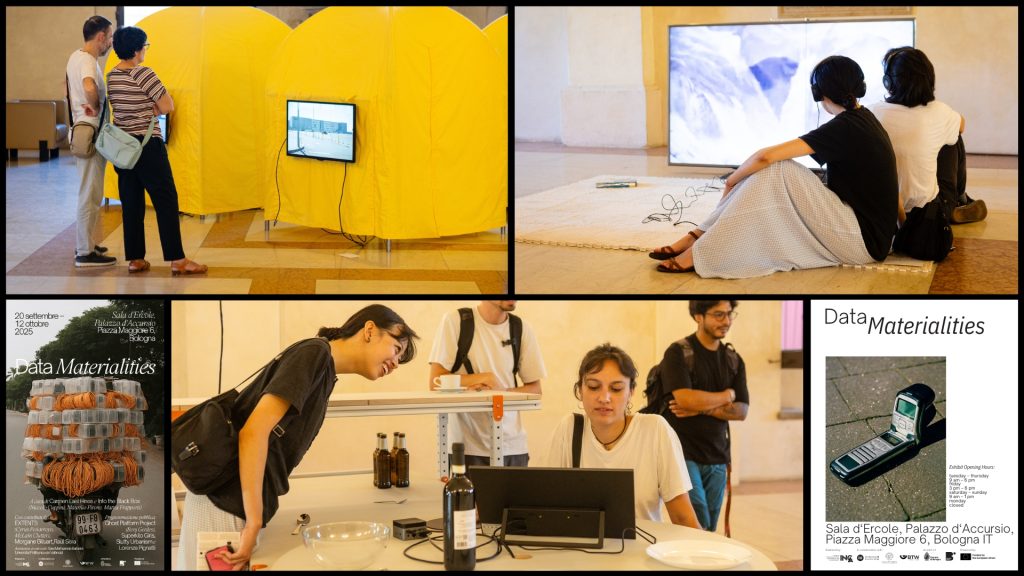
Data Materialities
On September 20, the exhibition Data Materialities opened in the historic Sala d’Ercole of Palazzo d’Accursio in Bologna. The project, curated by Carmen Lael Hines, Maurilio Pirone, Mattia Frapporti, and Niccolò Cuppini, explores the “hard” dimension of digital technologies through an exhibition journey that begins with chip production, goes through the installation of fiber optic cables, and ends in a workspace for digital nomads, featuring contributions from Rául Silva, Morgane Billuart, and EXTENTS (Cyrus Peñarroyo, McLain Clutter).
The exhibition is the result of work that started exactly one year ago with the Big Tech and Counter-Technologies residency, a laboratory moment in which selected artists and architects hybridized their projects and interests with the results of INCA’s research, particularly on the themes of genealogy and the infrastructures of the digital.
Against an imaginary that too often dwells on the idea of the “virtual” as a disjointed, immaterial spatiality, Data Materialities focuses on the physicality of the digital, made of silicon and fiber optics, but also of bodies at work in the streets as well as in internet cafés.
Morgane Billuart’s video installation, Of Sand and Stones, reconstructs the supply chains of electronic circuit production – from Taiwan’s coastal hubs to manufacturing plants in the Arizona desert – revealing the precarious balance of chip production, which lies at the center of contemporary geopolitical tensions.
Rául Silva’s Compiler Machine is based on the interaction between the reproduction of three portable tents historically used by telecommunications technicians to work in underground city manholes and a video work with a style halfway between documentary and sensory. Developed over the last 18 months through interviews and archival research in Galicia, Santander, and the Basque Country, Silva’s project intertwines historical investigation and semi-speculative narration, telling the invisible work behind our daily communication. The tents thus become material symbols of how information moves and is built in the world.
In their Internet Cafe, Cyrus Peñarroyo and McLain Clutter explore the physical space of the digital, starting from an “archaeological media” recovery of the first internet cafés. In an era dominated by Big Tech and ubiquitous digital connectivity, the internet café today appears as a relic of the past when the internet was experienced as a place, not just a service. The café is constructed from a heterogeneous collection of materials and architectural components “hacked” playfully to create a unique environment. The public is invited to interact with the work by logging in, browsing, and celebrating connection—digital, social, and architectural.
The exhibition is enriched by two talks with international guests. On Wednesday, October 1, Letizia Chiappini (Slutty Urbanism) and Benjamin Gerdes (Ghost Platform Project) will discuss the “Promiscuous approaches to digital spatiality.” One week later, on Wednesday the 8th, Lua Vollaard (Superkilogirls) and Lorenza Pignatti (NABA Milan) will debate on “Economies of measurement: from productivity, to movement, to desire.”
To close, on the morning of Friday, October 10, there will be a presentation of the educational module “Platforms and Digital,” developed by the INCA project to raise awareness among new generations for the conscious use of digital technologies, as well as the presentation of the results of the Open Innovation Labs held in the last three years in Bologna, Barcelona, and Bucharest for the participatory design of new digital platforms for the city.
Maurilio Pirone, University of Bologna
Share on Facebook Share on Twitter Share on Pinterest